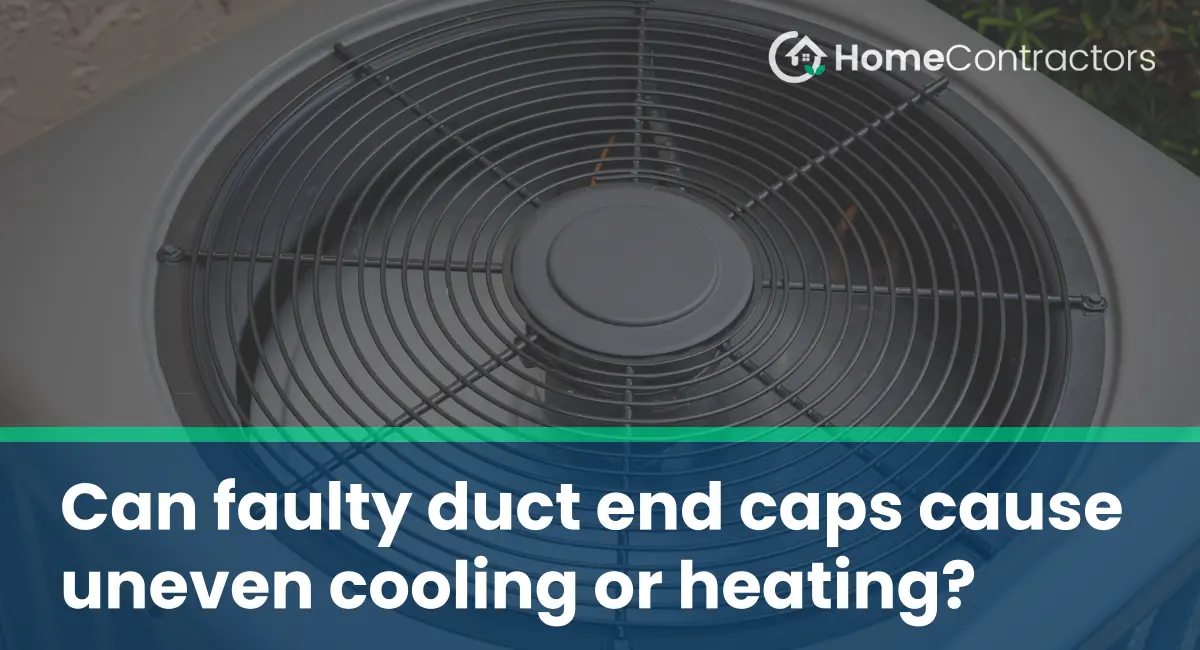When it comes to keeping our homes comfortable, a properly functioning HVAC system is essential. However, certain issues within the system can disrupt the balance of airflow, leading to uneven cooling or heating. One such issue that can contribute to this problem is faulty duct end caps. In this article, we will explore the role of duct end caps in HVAC systems, how they can become faulty, and how this can lead to uneven cooling or heating.
Understanding the Role of Duct End Caps
Duct end caps are an integral part of the HVAC system, responsible for ensuring proper airflow and distribution of conditioned air throughout your home. Located at the ends of air ducts, these caps act as barriers, preventing air leaks and directing the flow of air in the intended direction. They are designed to ensure that the air is distributed evenly and efficiently, maintaining optimal temperatures in different areas of a building.
Causes of Faulty Duct End Caps
Faulty duct end caps can arise due to various reasons, including:
- Wear and Tear: Over time, the constant circulation of air, temperature changes, and environmental factors can lead to wear and tear of duct end caps. This wear can cause them to become loose, cracked, or damaged, compromising their ability to seal the ducts effectively.
- Poor Installation: Improper installation of duct end caps, such as not securing them tightly or using the wrong size, can lead to air leakage. If the caps are not fitted correctly, they may fail to maintain the desired airflow, negatively affecting the distribution of conditioned air in your home.
- Insufficient Maintenance: Regular maintenance is crucial for the smooth functioning of your HVAC system. However, neglecting the maintenance of duct end caps can result in build-up of dust, debris, or even mold. These contaminants can clog or block the caps, hindering proper airflow and causing uneven cooling or heating.
Impact of Faulty Duct End Caps on HVAC Systems
Uneven cooling or heating is often a result of poor airflow management within the ductwork. Faulty duct end caps can exacerbate this issue by interrupting the desired flow of air. Here’s how:
- Air Leakage: Loose or damaged duct end caps can allow air to escape or infiltrate the system at different points. This leakage disrupts the balance of airflow, leading to uneven cooling or heating in different areas of your home. Rooms farther from the HVAC unit may receive less conditioned air, resulting in temperature variations.
- Reduced Efficiency: When air escapes through faulty duct end caps, the system has to work harder to maintain the desired temperature. This increased workload leads to reduced HVAC system efficiency, higher energy consumption, and ultimately, higher utility bills.
- System Strain: The lack of proper airflow caused by faulty duct end caps can put excessive strain on the HVAC system. The system might have to run for longer durations to compensate for the disrupted airflow. This strain can lead to premature wear and tear of the equipment, reducing its lifespan and increasing the likelihood of frequent repairs or replacements.
Addressing the Issue and Ensuring Proper Cooling or Heating
To ensure proper cooling or heating in your home, it’s important to address any faulty duct end caps promptly. Here are some steps you can take:
- Regular Inspection: Regularly inspect the duct end caps for any signs of damage, such as cracks, loose fittings, or wear. A professional HVAC technician can provide a thorough inspection to identify any issues and recommend appropriate solutions.
- Proper Installation: During HVAC system installation or maintenance, ensure that the duct end caps are correctly installed. The technician should also check for compatibility and make sure they are securely attached.
- Cleaning and Maintenance: Regularly clean and maintain your HVAC system to prevent the build-up of dust, debris, or mold on the duct end caps. This will help ensure optimal airflow and prevent any blockages that could impact the cooling or heating efficiency.
Faulty duct end caps can significantly impact the performance of your HVAC system, causing uneven cooling or heating in your home. Understanding their role and potential causes of failure is essential for maintaining a comfortable indoor environment. By addressing any issues with duct end caps promptly and ensuring regular maintenance, you can ensure proper airflow, efficient cooling or heating, and enhance the overall performance of your HVAC system.
